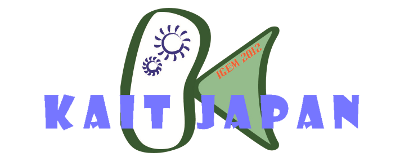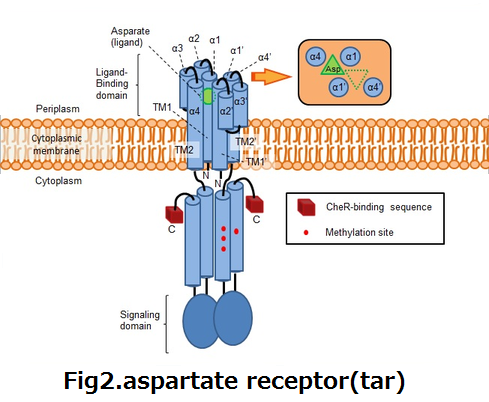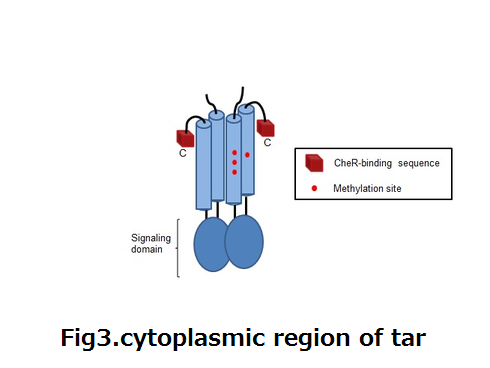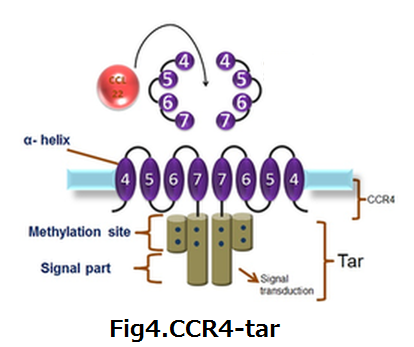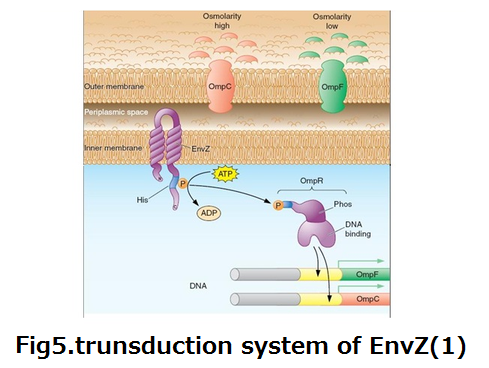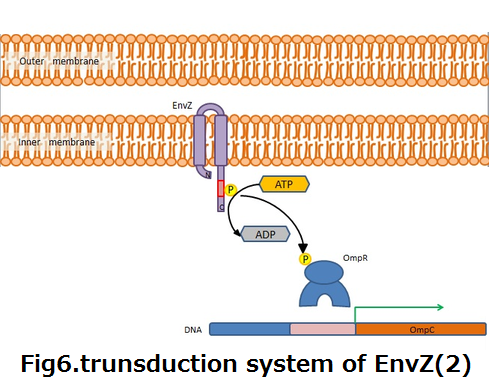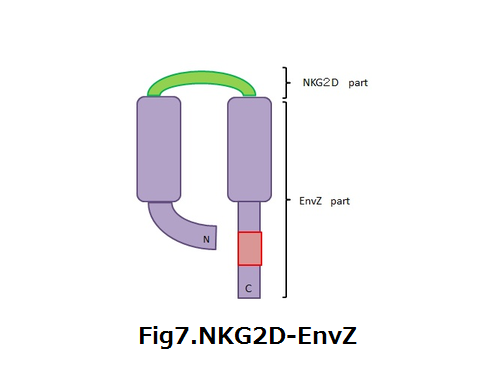Team:KAIT Japan/Project
From 2012.igem.org
(Difference between revisions)
(→E.coli which kill cancer cells.) |
(→E.coli which kill cancer cells.) |
||
| Line 79: | Line 79: | ||
:'''3-1,Chemotaxis to CCL22''' | :'''3-1,Chemotaxis to CCL22''' | ||
| + | ::The signal transduction mechanism of prokaryote and eukaryote about chemotaxis is radically different. | ||
| + | ::CCR4 is G protein?coupled receptor (GPCR) from human. E.coli don’t have chemotaxis to CCL22 even though we make E.coli express CCR4 because of diffrent of signal transduction. So, we focus on aspartate receptor (Tar). Tar is chemotaxis receptor of E.coli. which cause chemotaxis to aspartic acid. We design the part which consist of transmembrane (Helical1~7) of CCR4 and cytoplasmic of tar. We call this part CCR4-Tar. When this part combine CCL22, E.coli go to cancer cells.(fig2,3,4) | ||
| + | |||
<p>[[file:KAIT_JAPAN-Project-emvz-04.png|left|]] | <p>[[file:KAIT_JAPAN-Project-emvz-04.png|left|]] | ||
[[file:KAIT_JAPAN-Project-emvz-05.png|center|]]</p> | [[file:KAIT_JAPAN-Project-emvz-05.png|center|]]</p> | ||
:<p><div align="left"><div style="margin-left:120px">'''fig2'''</div></div><div align="right"><div style="margin-right:300px">'''fig3'''</div></div></p> | :<p><div align="left"><div style="margin-left:120px">'''fig2'''</div></div><div align="right"><div style="margin-right:300px">'''fig3'''</div></div></p> | ||
| - | |||
[[file:KAIT_JAPAN-Project-emvz-07.png|right|]] | [[file:KAIT_JAPAN-Project-emvz-07.png|right|]] | ||
| - | |||
| - | |||
| + | |||
| + | :'''3-2.Combination with cancer cells''' | ||
| + | ::Membrane protein NKG2D expression in E.coli is receptive MICA.MICA is a material that is produced by tumor specifically. And the signal induce production azurin,and tumor is destroyed by azurin! | ||
| + | ::Human NK cell express NKG2D, and can receptive MICB etc. | ||
| + | ::However cancer cell have protective system against immunity, for example human NK cell. | ||
| + | ::For that reason NK cell can’t destroy effectively cancer. | ||
| Line 101: | Line 107: | ||
| + | :<div align="right"><div style="margin-right:200px">'''fig4'''</div></div> | ||
| + | :'''3-3 When MICA is recepted by NKG2D , How E.coli product Azurin?''' | ||
| + | ::Menbrane protein EnvZ cascade, E.coli has it orijinall, as a osmolality sensor was used for the system what product Azurin by a signal for NKG2D. | ||
| + | ::EnvZ perceive osmolality shift, and control expression of membrane protein OmpF and OmpC on the gene level.(fig5,6) | ||
| + | ::Histidine which intracellular part of EnvZ is phosphorylated by ATP when the factor of osmolality shift is receptived to EnvZ. Then OmpR that is activator enhance OmpC.(fig7) | ||
| - | |||
| - | |||
| - | :: | + | ::We applied the cascade to produce Azurin. |
| - | + | ::We designed that azurin is produced by converting OmpC part to gene of azurin when MICA bond with NKG2D-EnvZ. | |
| - | + | ||
| - | + | ||
| - | |||
<p>[[file:KAIT_JAPAN-Project-emvz-01.png|left|]] | <p>[[file:KAIT_JAPAN-Project-emvz-01.png|left|]] | ||
[[file:KAIT_JAPAN-Project-emvz-02.png|center|]]</p> | [[file:KAIT_JAPAN-Project-emvz-02.png|center|]]</p> | ||
| Line 120: | Line 126: | ||
[[file:KAIT_JAPAN-Project-emvz-03.png|right|]] | [[file:KAIT_JAPAN-Project-emvz-03.png|right|]] | ||
| - | |||
| - | |||
| - | |||
| - | : | + | |
| - | :: | + | :'''3-4 The system of destroying cancer by Azurin''' |
| + | |||
| + | ::Azuirn is water solubility copper protein that is isolated from Pseudomonas aeruginosa. | ||
| + | ::And 14kDa molecular weight. | ||
| + | ::This protein forms a complex p53 that is transcription activation factor relate apoptosis, and suppress degradation of p53. | ||
| + | ::The reaction induce DNA fragmentation. | ||
| + | |||
| + | |||
| + | |||
| Line 135: | Line 146: | ||
:<div align="right"><div style="margin-right:200px">'''fig7'''</div></div> | :<div align="right"><div style="margin-right:200px">'''fig7'''</div></div> | ||
| - | |||
| - | |||
| - | |||
| - | |||
| - | |||
| - | |||
Revision as of 21:12, 26 September 2012
|
|
|
|
|
|
|
|
|
|
E.coli which kill cancer cells.http://partsregistry.org/wiki/images/1/1d/Biosafety_Level1.png Biosafety Level 1
|
 "
"
